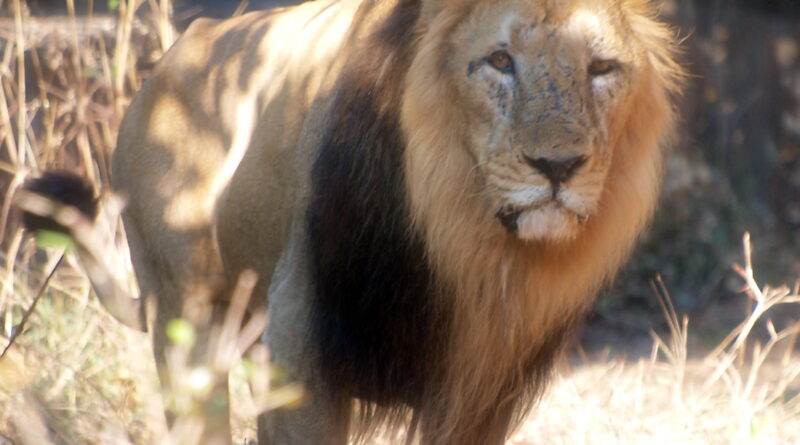Prey base for Lions increased by 37% in five years in Gir
MoS MoEFCC replied to RS MP Parimal Nathwani
BILKULONLINE
Ahmedabad, Feb 6: The prey base for the Asiatic Lion in Gir has increased by 37% in the last five years. The estimated prey base for Lion in Gir has increased from 1,55,659 in 2019 to 2,13,391 in 2024. Union Minister of State for Environment, Forest and Climate Change Kirti Vardhan Singh provided the information in Rajya Sabha on February 6, 2025 while replying to question raised by RS MP Parimal Nathwani.

According to the statement of the minister, prey base augmentation enclosures for key species such as Spotted deer (Axix axis), Sambar (Rusa unicolor) have been strategically established across key areas to enhance the prey base population and support long-term sustainability. Systematic population assessments of herbivores are conducted to monitor population trends and ensure stable wild prey base within the landscape, said the minister.
According to the statement of the minister, Sambar prey base augmentation enclosures have been established at Krangasa, Vadvangada, Ambardi, Kileshwar-1, Kileshwar-2, Rampara, Karjada, and Spotted deer prey base augmentation enclosures have been established at Satvirada and Rampara.
Nathwani wanted to know about the herbivore prey base for lions in Gir, Gujarat; the steps taken by the Central Government and the State Government to ensure availability of sufficient preys around the areas of lions’ movement; whether any breeding centres are set up for herbivore animals in and around Gir to cater to growing number of lions and their migration out of Gir and the details of steps taken to reduce incidents of lions moving out to human areas and to prevent human-animal conflicts.
According to the statement of the minister, number of important steps have been taken to reduce incidents of lions moving out to human areas and to prevent human-animal conflicts, like construction/erection of physical barriers such as solar powered electric fence, bio-fencing, boundary walls etc. to prevent the entry of wild animals into crop fields, Radio collaring of selected lions for assessing their movement and behaviour patterns as well as trackers and rescue teams are deployed for shifting animals from human populated areas in case of conflicts, etc. Moreover, habitat improvement works are taken up in Protected Areas and other lion habitats, financial aid for human injuries/causalities as well as for cattle deaths are provided by the state government.



